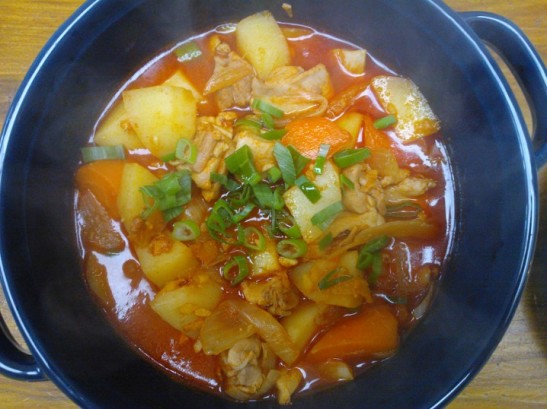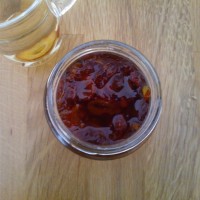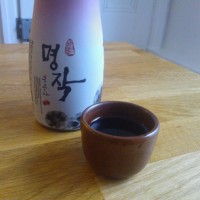Cooking Korean food: Spicy chicken and potato stew
When I first started cooking Korean food at university, for lack of any Asian food stores in Cornwall, I did some reading and ordered a few of the key seasonings online. Now I live in the city and have better access, I much prefer using a physical shop but I do recommend the supplier I ordered from if you’re stuck in a more rural location in the UK. A tub of gochujang made up part of that first order and this chicken and potato dish was one of the first recipes I tried with it. Originally, it was a wet and windy Cornish autumn – the ideal partner for warming and comforting stews – but I’ve been making it throughout the year ever since. Even in the hot and humid weather we’ve experienced lately, I’m still content with something hot and spicy: Korean tradition dictates that spicy food is best in the summer months, with the chillies making you sweat which in turn cools you down in the long run. There must be some sense to it since spicy food is most associated with hot countries like Mexico, India and Thailand.
This dish is known in Korean as dakbokkeumtang, which roughly translates as a stir-fried chicken soup, though it’s more akin to a Western stew with lots of thick sauce and the method of cooking it is quite similar to the chicken and vegetable stew made with oyster sauce that my parents have now taken to cooking quite regularly.
Apart from the gochujang, all the ingredients are probably in your cupboards or are part of your weekly shop, there’s very little preparation or knife skills involved and it doesn’t require much attention. The basic seasonings are non-negotiable, as are the potatoes which help thicken the sauce, but the meat and vegetables you include can be varied to suit your preferences (though be sure to adjust the cooking times). I like to use skinless and boneless chicken thighs as they’re cheap, easy and hold up better in simmered dishes than breast meat; for vegetables I like to roughly chop carrots and boil them with the potatoes for a one-pot dish. If I’m feeling more adventurous I’ll leave them out and serve this with some more traditional Korean vegetable dishes. It’s certainly worth hunting down the gochujang either online or from a Chinese supermarket as this makes a tasty alternative to a curry or bowl of chilli.
Ingredients
- 1 tbsp rapeseed or groundnut oil
- 4 chicken skinless and boneless chicken thighs, cut into 2-3 cm pieces
- 2-3 large cloves of garlic, finely minced
- 5 cm piece of ginger, peeled and finely minced
- 1 small onion, peeled, halved and cut into thick slices
- 2 tbsp light soy sauce or fish sauce (dark soy sauce is not a good substitute)
- 2 tbsp gochujang
- 2 tbsp honey or light brown sugar
- 1-3 tbsp mild Korean chilli flakes, or to taste (optional)
- 200-300g floury potatoes (generally I use one 1 small baking potato per person); more close textured potatoes like Jersey Royals don’t soak up the sauce in the same way
- 1 large carrot
- 3 spring onions, white and green parts separated
- 1-2 tsp toasted sesame oil
In a heavy pan, heat the oil over a medium heat. Lightly brown the chicken pieces, stir-frying for 5 minutes before adding the garlic, ginger and sliced onion before gently frying for another 2-3 minutes. Meanwhile, mix the soy sauce, gochujang and honey in a small bowl along with some hot water until you have a thin sauce. Once the onions have softened, add the sauce to the pan along with enough water to cover and the Korean chilli powder, if using. Leave to simmer gently for 10 minutes while you prepare the vegetables.
For the potatoes, peel them and cut them into large 3-5 cm chunks but don’t rinse them, as the starch will help to thicken the sauce. For the carrot, peel and trim off the ends and cut into chunks of equal size as the potatoes – to minimise the cooking times, cut the carrot by angling the knife at 45° and rolling the carrot by a quarter-turn after each cut: you’ll have angular and irregular looking pieces but with a maximum surface area for faster cooking, click the link for some images if you’re not following what I mean. For the spring onions, cut the white sections into 2-3 cm lengths, and finely chop the dark green parts. Add the carrot and potatoes to the pan and simmer for 15-20 minutes, until both are tender. Five minutes before the end of cooking, add the whites of the spring onion. Remove from the heat and garnish with the remaining spring onions and the sesame oil. Serves 2 with rice, but worth scaling up: leftovers taste even better the following day and it freezes well.









Yummy!
LikeLike